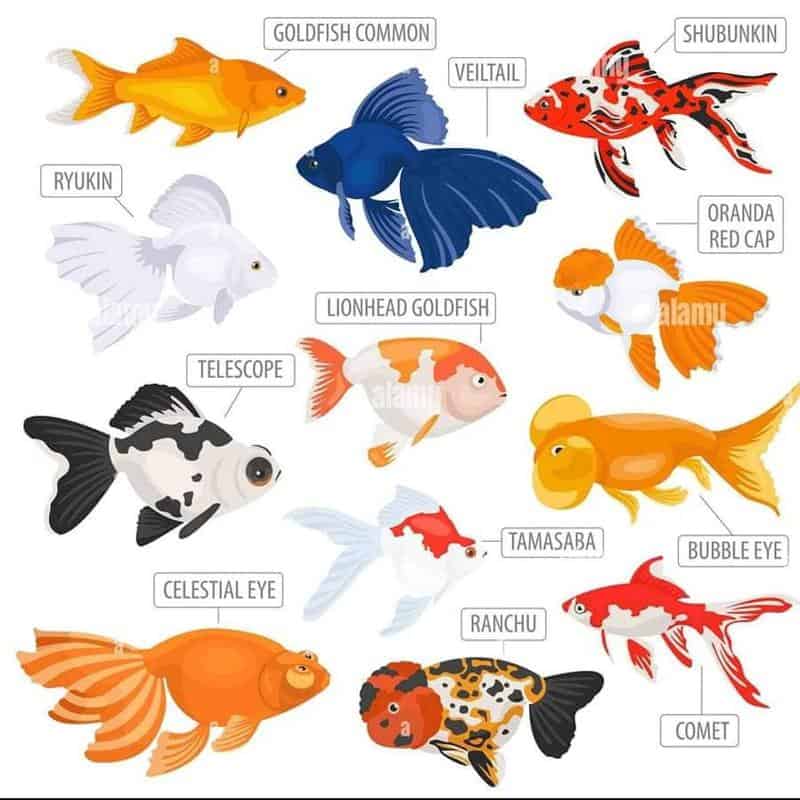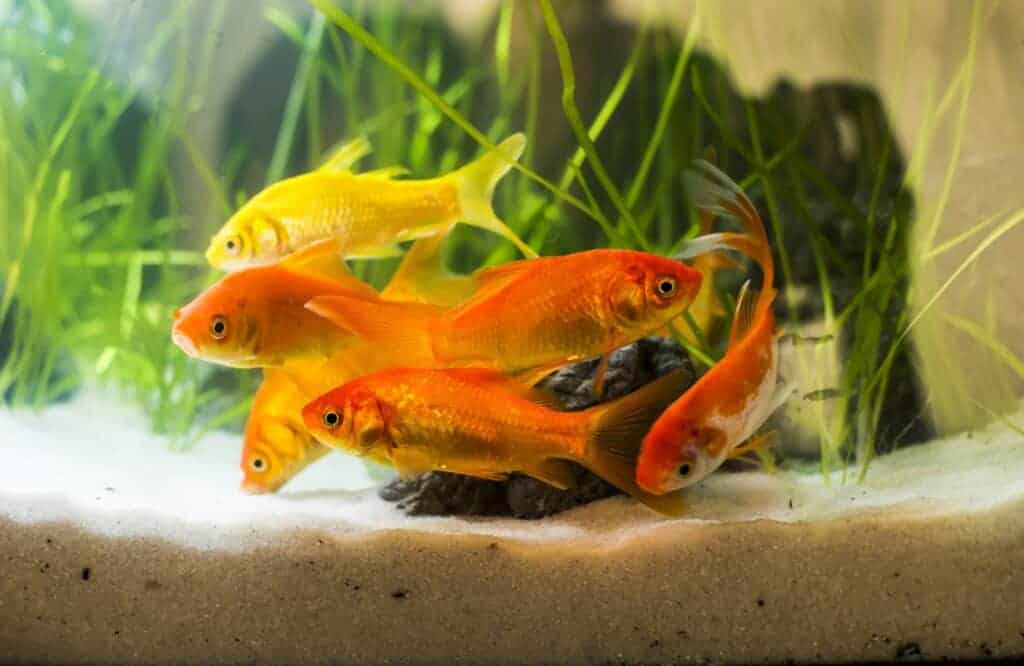So, you're curious about goldfish mating? Well, the answer to your question is actually quite interesting. You see, goldfish are known to be one of the most popular pet fish around, and they come in all sorts of different varieties. From the classic orange goldfish to the fancy and exotic ones with elaborate patterns and fins, there's a wide range of options out there. But can these different types of goldfish actually mate with each other? Let's dive into the world of goldfish mating and find out!
When it comes to goldfish, mating is indeed possible between different types. However, there are a few factors to consider. One important thing to note is that goldfish are not a naturally occurring species. They have been bred and selectively bred by humans for centuries, which has led to the development of various breeds. Some of these breeds are so different in appearance that they may even have difficulty mating with each other. Additionally, there are certain physical characteristics and genetic traits that can affect the compatibility and success of their mating process.
In order for goldfish of different types to mate, it is important to ensure that they are of similar size and at a sexually mature age. This increases the likelihood of successful mating and the production of healthy offspring. Additionally, the water conditions and overall environment must be suitable for breeding. Creating an ideal environment with ample space, proper water temperature, and a healthy diet can greatly increase the chances of successful mating between different types of goldfish.
In our upcoming article, we will delve deeper into the fascinating world of goldfish mating. We'll discuss the various breeding techniques used by enthusiasts and how to identify the signs of mating behavior in your goldfish. So, stay tuned to learn more about the intricacies of goldfish reproduction and the beautiful and unique hybrids that can result!
Can Different Types of Goldfish Mate
Goldfish are known for their beautiful colors and graceful swimming movements. They have been admired and kept as pets for centuries. One intriguing question that often arises is whether different types of goldfish can mate with each other. In this article, we will explore the factors that affect goldfish mating and delve into the challenges and possibilities of mating different types of goldfish.
Factors Affecting Goldfish Mating
When it comes to goldfish mating, there are two main factors that play a crucial role: physical differences and behavioral compatibility. Let's take a closer look at each of these factors.
Physical Differences
Physical differences encompass a range of characteristics such as body shape and size, fins and tail characteristics, as well as color and pattern variations. These factors can significantly influence the success of goldfish mating.
Body Shape and Size
Goldfish come in various body shapes and sizes. Some have slender bodies, while others have rounder, more compact bodies. These physical differences can create obstacles when it comes to mating, as certain body shapes may not be compatible for successful reproduction. For example, if a long-bodied goldfish attempts to mate with a round-bodied goldfish, the difference in body shape may hinder successful egg fertilization.
Fins and Tail Characteristics
Another physical aspect that impacts goldfish mating is fins and tail characteristics. Variations such as the length, shape, and finnage of goldfish fins and tails are unique to each type and breed. Differences in these characteristics can affect the ability of goldfish to engage in courtship rituals or perform the necessary tasks for successful reproduction.
Color and Pattern Variations
Goldfish are known for their vibrant colors and intricate patterns. However, these variations in color and pattern can also play a role in successful mating. It is believed that goldfish are more likely to mate with individuals that have similar coloration or pattern variations. Mating between goldfish with stark differences in color and pattern may be less common, as they may not be visually appealing to one another.

Behavioral Compatibility
In addition to physical differences, behavioral compatibility is also vital for goldfish to successfully mate. Goldfish engage in courtship rituals and exhibit specific spawning behaviors that are essential for reproduction. Let's explore these factors in more detail.
Courtship Rituals
Goldfish have elaborate courtship rituals, which typically involve the male goldfish pursuing the female, displaying vibrant colors and fin movements to attract her attention. If the courtship rituals are not properly executed or understood by both individuals, mating may not occur. Living conditions, such as a lack of suitable hiding places or limited space, can also affect the success of courtship rituals.
Spawning Behavior
Spawning behavior is another critical aspect of goldfish mating. Goldfish are egg-laying species, and the female releases her eggs while the male simultaneously releases sperm to fertilize them. The proper timing and coordination of these behaviors are crucial for successful mating. If there is a significant difference in the timing of reproductive readiness between two goldfish, mating may not occur.
Male and Female Interactions
The interaction between male and female goldfish also influences mating success. In some cases, male goldfish may exhibit aggressive behavior towards females, preventing successful mating from taking place. On the other hand, if both individuals are compatible and exhibit cooperative behaviors, successful mating becomes more likely.
Challenges of Mating Different Types of Goldfish
While goldfish mating between individuals of the same type or breed is relatively straightforward, mating between different types of goldfish can pose several challenges. Let's explore two of the most common challenges: mismatched breeding seasons and genetic incompatibility.
Mismatched Breeding Seasons
Different types of goldfish may have variations in their breeding seasons. Some goldfish may be ready to mate during the spring, while others may prefer the summer or fall. These differences in spawning triggers and reproductive cycles can make it challenging to synchronize the breeding seasons of different types of goldfish, leading to limited mating opportunities.
Genetic Incompatibility
Genetic incompatibility is another significant challenge when attempting to mate different types of goldfish. When two different types of goldfish mate, it can result in hybrid offspring. In some cases, these hybrids may exhibit weakness or health issues due to genetic incompatibilities. Additionally, hybrids may also be sterile or infertile, unable to reproduce further.

Successful Mating between Different Types of Goldfish
Although mating between different types of goldfish can be challenging, there are methods that can increase the chances of successful reproduction. Two approaches commonly used are selective breeding and artificial hormone induction.
Selective Breeding
Selective breeding involves carefully choosing compatible goldfish pairs for mating. By selecting individuals with similar physical characteristics, behavioral compatibility, and reproductive timing, breeders can create ideal pairings that increase the likelihood of successful mating. Over time, this process can lead to gradual adaptation to different goldfish varieties and the production of healthy offspring.
Artificial Hormone Induction
Artificial hormone induction is another method used to encourage goldfish to mate. By administering hormones, such as gonadotropin-releasing hormone analogs, breeders can synchronize the reproductive readiness of male and female goldfish. This process stimulates spawning behavior and increases the chances of successful mating.
Conclusion
In conclusion, while goldfish of different types can mate under certain circumstances, there are challenges due to physical and behavioral differences. Factors such as body shape and size, fins and tail characteristics, as well as color and pattern variations, play a crucial role in goldfish mating. Behavioral compatibility, including courtship rituals, spawning behavior, and male and female interactions, also significantly influence mating success.
Mating different types of goldfish can pose challenges, such as mismatched breeding seasons and genetic incompatibility. However, through selective breeding and artificial hormone induction, it is possible to overcome these obstacles and achieve successful mating. By carefully selecting compatible pairs and utilizing hormone treatments, breeders can create a diverse and vibrant population of goldfish.



No comments:
Post a Comment